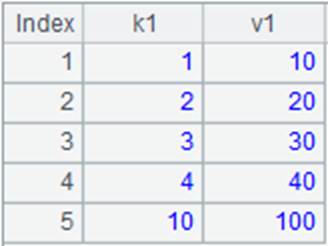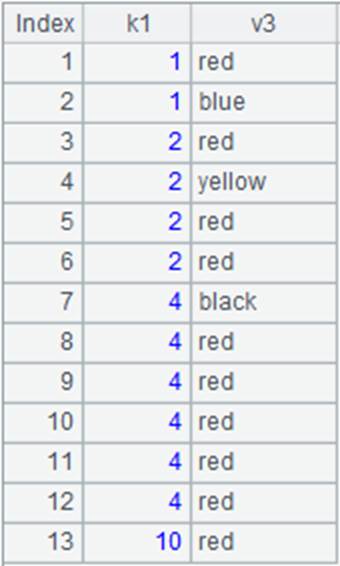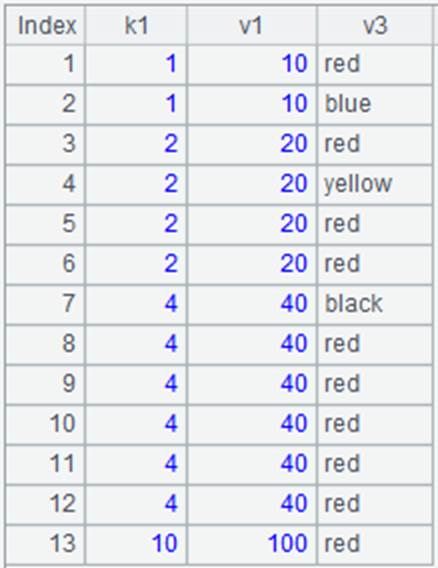T.append(cs)
Description:
Append-write records of a cursor to a pseudo table.
Syntax:
T.append(cs)
Note:
The function append-writes records of cursor cs to pseudo table T. If the cursor contains pseudo fields, they will be automatically converted to real fields at append-write.
Only supported by esProc Enterprise Edition.
Parameter:
|
T |
A pseudo table. |
|
cs |
A cursor. |
Option:
|
@y |
Write the appended records to the memory instead of keeping it in the external memory. |
Return value:
Pseudo table
Example:
Append-write to a pseudo table:
|
|
A |
|
|
1 |
=create(file).record(["D:/file/Employee2.ctx"]) |
|
|
2 |
=pseudo(A1) |
Generate a pseudo table object. |
|
3 |
=create(Dept,AvgSalary).record(["CSD",6400.53])
|
Create a table sequence:
|
|
4 |
=A2.append@i(A3.cursor()) |
Append A3’s cursor record to the pseudo table. |
|
5 |
>A2.close() |
Close the pseudo table. |
When the cursor contains pseudo fields:
|
|
A |
|
|
1 |
=[{file:"EMPLOYEE.ctx", column:[{name:"GENDER", enum:"GENDER_enum", list:["F","M"]}]}] |
Return pseudo table definition record. Below is content of EMPLOYEE.CTX:
|
|
2 |
=pseudo@v(A1) |
Generate a pseudo table object. |
|
3 |
=create(EID,NAME,GENDER_enum).record([11,"Asew","M"]) |
Generate a table sequence:
|
|
4 |
=A3.cursor() |
Return records of A3’s table sequence as a cursor. |
|
5 |
=A2.append(A4) |
Append records of A4’s cursor, where GENDER_enum is a pseudo field, to A2’s pseudo table. |
|
6 |
=A2.import() |
View records of A2’s pseudo table after the append-write, where values of pseudo field GENDER_enum are automatically converted to those of real field GENDER:
|
|
7 |
>A2.close() |
Close the pseudo table. |
Use @y option to write the appended records to the memory:
|
|
A |
|
|
1 |
=create(file).record(["em.ctx"]) |
Return the pseudo table definition record. |
|
2 |
=pseudo(A1) |
Generate a pseudo table definition object. |
|
3 |
=A2.import() |
Read data from the pseudo table.
|
|
4 |
=create(EID,NAME).record([0,"AAAA"]) |
Return a table sequence:
|
|
5 |
=A2.append@y(A4.cursor()) |
Append table sequence A4’s records to pseudo table A2; @y option enables converting A4’s data to an in-memory zone table and writing it to the memory. |
|
6 |
=A2.import() |
Import data from the pseudo table, where there are records appended in A5.
|
|
7 |
>A2.close() |
Close the pseudo table. |
|
8 |
=pseudo(A1).import() |
Import data from pseudo table A1; as A5 uses @y option and the appended data isn’t written to the external memory, the imported pseudo table data here does not contain A4’s data; the result is the same as A3’s:
|




